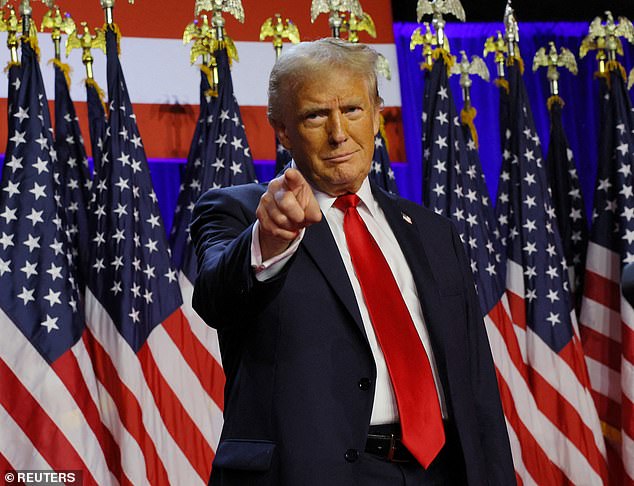Donald Trump has pushed back his deadline to end the war between Russia and Ukraine despite promising to end the conflict within “24 hours” of becoming president.
The US president-elect now aims to end the war against Ukraine within 100 days of taking office, Keith Kellogg, Trump’s pick as special peace envoy for Ukraine, told Fox News on Wednesday.
“This is a war that needs to end, and I think he can do it in the short term,” Kellogg, 80, added, defining the “short term” as a little more than 14 weeks before the inauguration.
The comments come just a day after Trump revealed at a news conference that he would not begin peace talks until he takes office on January 20.
This despite having repeatedly promised during his campaign to end the war as soon as he was elected.
“People need to understand that he’s not trying to give something to Putin or the Russians, he’s actually trying to save Ukraine and save its sovereignty,” Kellogg said.
“And he will make sure that it is fair and just.”
The US diplomat praised the president-elect for his willingness to meet with Vladimir Putin and said outgoing President Joe Biden’s ‘biggest mistake’ was his refusal to work with the Russian president.
Donald Trump promised to end the war between Russia and Ukraine within “24 hours” of becoming president, but this has now changed to 100 days.
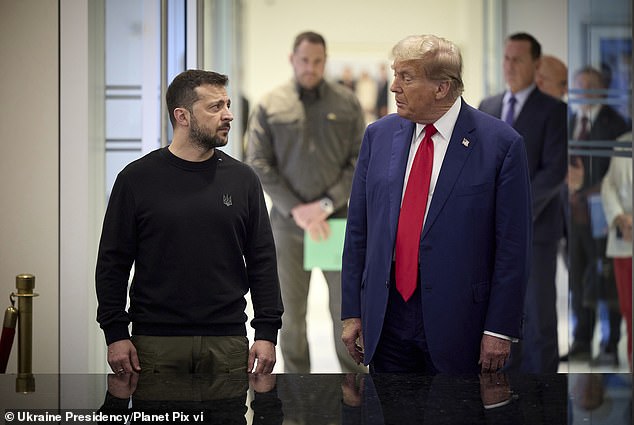
Shortly after his victory, Trump spoke with Zelensky by phone, a conversation the Ukrainian leader called “excellent.”
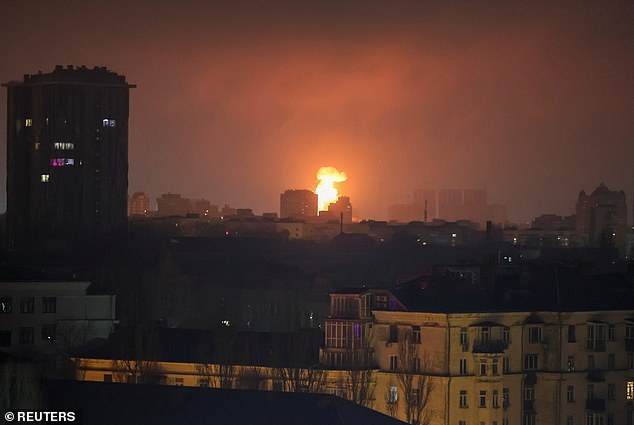
The explosion of a drone after hitting an apartment building is seen in the sky during a Russian drone strike, amid Russia’s attack on Ukraine, in kyiv, Ukraine, January 10, 2025.
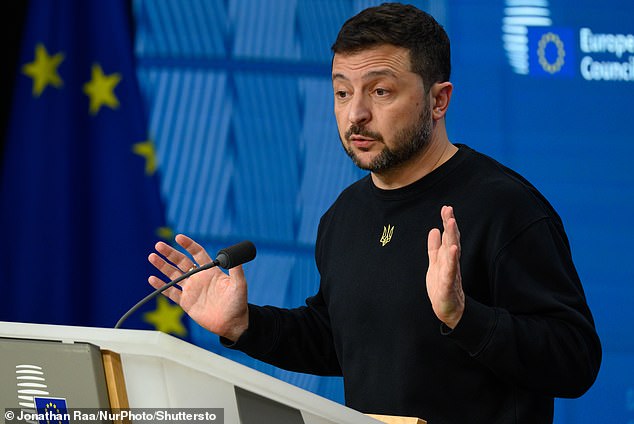
Britain, France and Germany have already promised to support Ukraine “for as long as necessary” and Zelensky is adamantly opposed to ceding territory to Vladimir Putin.
Kellogg assured that Trump would seek to find a solution to end the conflict that would work for both Putin and Ukrainian President Volodymyr Zelensky.
‘I think they will reach a solvable solution in the short term. …Let’s set it at 100 days,’ he said.
Kellogg did not go further into discussing details of possible peace agreements that may be under consideration by the incoming administration.
After Trump’s election victory, many wondered what direction the Trump administration might take.
Shortly after his victory, Trump spoke with Zelensky by phone, a conversation the Ukrainian leader called “excellent.”
But in September, the Republican’s running mate and now vice president-elect, JD Vance, offered former US Navy Seal Shawn Ryan an outline of how peace could be achieved in Ukraine under the Trump administration.
“What it probably looks like is that something like the current demarcation line between Russia and Ukraine becomes a demilitarized zone, heavily fortified so that the Russians don’t invade again,” Vance told the former Seal on his podcast.
‘Ukraine remains an independent sovereign. Russia obtains guarantee of neutrality from Ukraine.
‘It does not join NATO or other allied institutions. “The Germans and other nations have to finance the reconstruction of Ukraine,” Vance added.
That revealing, if vague, description of what a Trump-brokered end to the war in Ukraine might look like was later echoed in a Wall Street Journal report that emerged days after the election.
Citing three sources “close to the president-elect,” the WSJ claimed that Trump’s transition office is considering a proposal that would prevent kyiv from joining NATO for at least 20 years in exchange for lucrative arms deals.
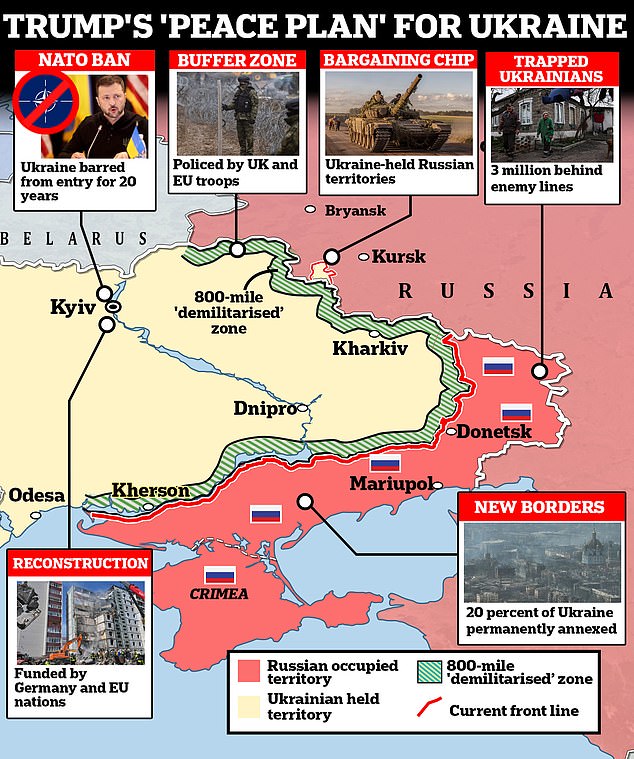
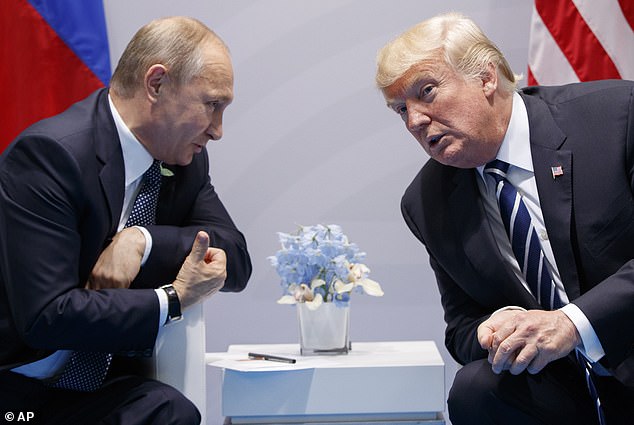
Keith Kellogg praised the president-elect for his willingness to meet with Vladimir Putin and said outgoing President Joe Biden’s ‘biggest mistake’ was his refusal to work with the Russian president
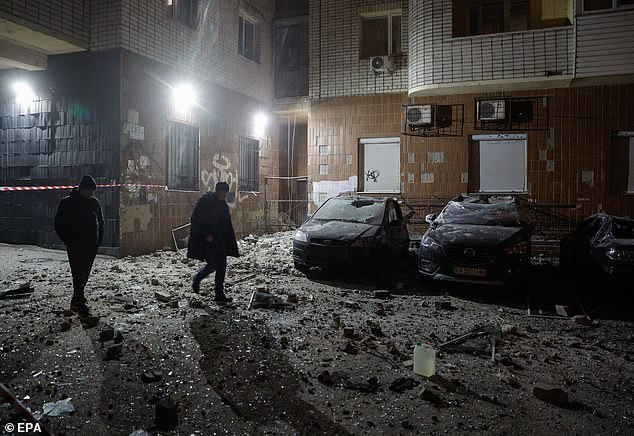
Local people walk near damaged cars at the site where debris from a drone fell on a residential building, in kyiv, Ukraine, January 10, 2025.
Meanwhile, the conflict would be stopped by implementing a large demilitarized zone (DMZ) that would effectively freeze fighting there and force kyiv to give up up to 20 percent of its territory as part of an 800-mile DMZ. ‘.
But the sources did not offer any insight into how that buffer zone between Russia’s border and unoccupied Ukraine would be monitored or managed, other than to say it would not be staffed by American peacekeepers.
This suggested that troops from other NATO nations, including the United Kingdom, would be tasked with controlling the DMZ.
“We can offer training and other support, but the barrel of the gun will be European… and we are not going to pay for it,” one source said.
“We are not going to send American men and women to defend peace in Ukraine… Have the Poles, Germans, British and French do it.”
But several obstacles must be overcome before the conflict can be frozen and a ceasefire introduced, starting with the evident lack of enthusiasm of those expected to accept and defend the proposal.
Days before Trump secured his election victory, Zelensky openly declared that making any concessions to Putin would be “unacceptable for Ukraine” and “suicidal for Europe.”
Furthermore, Zelensky’s main European partners, Britain, France and Germany, have already promised to support Ukraine’s armed forces in their fight against Moscow’s troops “for as long as necessary.”


